Navratri – Significance and Science behind the 9 days.
Also known as Durga Puja, this festival comes five times a year: Chaitra Navratri, Gupta Navratri, Sharada Navratri or Maha Navratri, Paush Navratri, Magha Navratri. Among these, Chaitra Navratri and Sharada Navratri are most popular. This 9-night, 10-day festival bears high religious, spiritual, and cultural significance.
What do 9 nights of Navratri stand for?
As per the Kalpas (Puranas), there are three dimensions of Shakti (the feminine energy): Mahakali (strength or power), Mahalakshmi (wealth, passion and material well-being), and Mahasaraswati (knowledge, dissolution, transcendence of the limitations of the mortal body). They are believed to represent the cosmos as the Earth, the Sun and the Moon.
They are also symbolic of the
3 gunas (virtues/qualities): tamas
(inertia), rajas (activity,
passion) and sattva (knowledge, purity),
respectively. Therefore, the first three days are dedicated to Durga or Kali, the
next three to Lakshmi, and the last three to Saraswati. The
tenth day is called Vijayadashmi (or Dussehra) where ‘Vijaya’ means victory – of
good over evil, the victory of Lord Rama over the ten-headed demon king,
Ravana.
Ravana’s ten heads represent ten negative qualities
–
Kaam (Lust),
Krodh (Anger),
Lobh (Greed),
Moh (Attachment),
Ahankar (Ego),
Bhay (Fear),
Irshya (Jealousy),
Jadta (Inertia),
Dvesh (Hate),
and Paschataap (Guilty).
Hence, this day also signifies victory over our own minds.
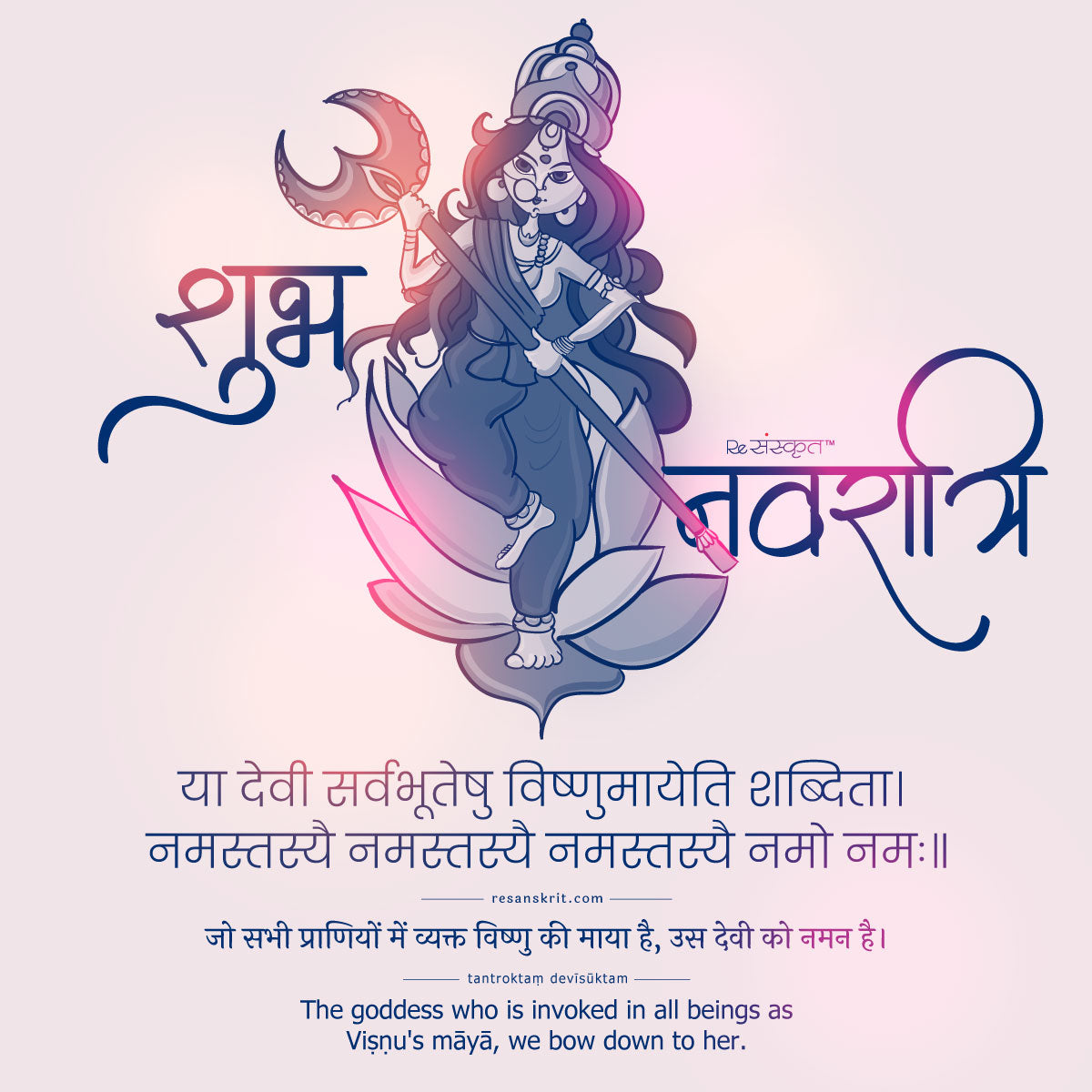
या देवी सर्वभूतेषु विष्णुमायेति शब्दिता।
नमस्तस्यै नमस्तस्यै नमस्तस्यै नमो नमः॥
Transliteration:
yā devī
sarvabhūteṣu viṣṇumāyeti śabditā।
namastasyai namastasyai namastasyai namo
namaḥ॥
Hindi
translation:
जो सभी प्राणियों में व्यक्त विष्णु की माया है, उस
देवी को नमन है।
English
translation:
The goddess who is invoked in all beings as Viṣṇu's
māyā, we bow down to her.
Source: तन्त्रोक्तं देवीसूक्तम् (tantroktaṃ devīsūktam)
Day 1 of 9 - Devi Shailaputri
Goddess Shailaputri, the first form of Durga, is revered as the foundation of spiritual practice. She presides over the Root Chakra (Mūlādhāra), where the awakening of Kundalini begins. As the daughter of the Mountain, she embodies stability, strength, and grounding. Worshipping her grants balance, vitality, and a firm base for higher spiritual ascent.

पूर्णेन्दुनिभाङ्गौरीं मूलाधारस्थितां प्रथमदुर्गां त्रिनेत्राम्।
पटाम्बरपरिधानां रत्नकिरीटां नानालङ्कारभूषिताम्॥
Transliteration:
pūrṇendunibhāṅgaurīṃ mūlādhārasthitāṃ
prathamadurgāṃ trinetrām।
paṭāmbaraparidhānāṃ ratnakirīṭāṃ nānālaṅkārabhūṣitām॥
Hindi
translation:
मैं देवी शैलपुत्री की पूजा करता हूँ, जो मूलाधार चक्र को नियंत्रित करती हैं, जो पूर्ण
चन्द्रमा के समान गौर वर्ण वाली, दुर्गा का प्रथम रूप, तीन नेत्रों वाली, रेशमी वस्त्र पहने, रत्नजटित मुकुट धारण
करने वाली तथा नाना प्रकार के आभूषणों से सुशोभित हैं।
English
translation:
I worship Goddess Śailaputrī, who governs the Root Cakra, is fair like the full moon,
the first form of Durgā, three-eyed, dressed in silk, wearing a gem-studded crown, adorned with a variety of
jewellery.
Source: नवदुर्गास्तुतिः|१|ध्यानम्|२
Shailaputri (शैलपुत्री), is the daughter of the Mountain King Himavat and is a manifestation and form of the Hindu mother goddess Mahadevi, representing herself as the pure form of goddess Parvati. She is the first Navadurga venerated during the first day of Navratri and is a reincarnation of Goddess Sati.

या देवी सर्वभूतेषु विष्णुमायेति शब्दिता।
नमस्तस्यै नमस्तस्यै नमस्तस्यै नमो नमः॥
Transliteration:
yā devī
sarvabhūteṣu śaktirūpeṇa saṃsthitā।
namastasyai namastasyai namastasyai
namo namaḥ॥
Hindi
translation:
जो सभी प्राणियों में शक्ति के रूप में स्थित है, उस
देवी को नमन है।
English
translation:
The goddess who is manifest in all beings as
strength, we bow down to her.
Source: तन्त्रोक्तं देवीसूक्तम् (tantroktaṃ devīsūktam)

वन्दे वाञ्छितलाभाय चन्द्रार्धकृतशेखराम्।
वृषारूढां शूलधरां शैलपुत्रीं यशस्विनीम्॥
Transliteration:
vande
vāñchitalābhāya candrārdhakṛtaśekharām।
vṛṣārūḍhāṃ śūladharāṃ śailaputrīṃ
yaśasvinīm॥
Hindi
translation:
हे माँ शैलपुत्री, मैं आपको नमस्कार करता हूँ। आप
मनचाहा वरदान देती हैं और मस्तक पर अर्धचंद्र से सुशोभित हैं। आप बैल पर आरूढ़ होकर
त्रिशूल धारण किये हुए, भव्य दिख रही हैं।
English
translation:
Who bestows desired blessings and is adorned
with a crescent moon on the head. Mounted on a bull,
is carrying a trident, and is the illustrious one.
O Mother Shailaputri, I offer my salutations to you.
Source: नवदुर्गास्तोत्रम्

Bring Sanskrit home!
ReSanskrit merchandise starting at ₹ 199.
Browse Collection!
Day 2 of 9 - Devi Brahmacharini
The second form of Goddess Durga is called Brahmacāriṇī. She governs and represents the स्वाधिष्ठानचक्र / Svādhiṣṭhāna Cakra / Sacral Chakra of our body. She represents Creativity, Emotions and Pleasure. Devi Brahmacāriṇī and the Svādhiṣṭhāna Cakra are associated with the colour Orange. Worshipping Brahmacāriṇī on the second day fuels one's creative mind and helps regulate and express emotions. She is the embodiment of penance and self-control, guiding the devotee to channel emotions with balance and refine desires into creative energy. Just as the Sacral Chakra governs joy, relationships, and flow, honouring Brahmacāriṇī helps cultivate emotional stability and creative expression on the path of higher realization.

पूर्णेन्दुनिभाङ्गौरीं मूलाधारस्थितां प्रथमदुर्गां त्रिनेत्राम्।
पटाम्बरपरिधानां रत्नकिरीटां नानालङ्कारभूषिताम्॥
Transliteration:
gauravarṇāṃ
svādhiṣṭhānasthitāṃ dvitīyadurgāṃ trinetrām।
dhavalavarṇāṃ brahmarūpāṃ puṣpālaṅkārabhūṣitām॥
Hindi
translation:
मैं देवी ब्रह्मचारिणी की पूजा करता हूँ, जो स्वाधिष्ठान चक्र को नियंत्रित करती हैं,
गौर वर्ण की हैं, दुर्गा का दूसरा रूप हैं, तीन नेत्रों वाली हैं, श्वेत वस्त्र धारण करती हैं, ब्रह्म स्वरूप हैं,
पुष्प आभूषणों से सुशोभित हैं।
English
translation:
I worship Goddess Brahmacharini, who governs the Sacral Chakra, is fair, the second
form of Durgā, three-eyed, dressed in white, power and form of Brahma, adorned with floral jewellery.
Source: नवदुर्गास्तुतिः|२|ध्यानम्|२
Brahmacharini (ब्रह्मचारिणी) means a devoted female student who lives in an Ashram with her Guru along with other students. She is the second aspect of the Navadurga forms of Mahadevi The goddess is worshipped on the second day of Navaratri (the nine divine nights of Navadurga). The goddess Brahmacharini wears white clothes and holds a Japa mala in her right hand and Kamandala, a water utensil in her left hand.

या देवी सर्वभूतेषु दयारूपेण संस्थिता।
नमस्तस्यै नमस्तस्यै नमस्तस्यै नमो नमः॥
Transliteration:
yā devī
sarvabhūteṣu dayārūpeṇa saṃsthitā।
namastasyai namastasyai namastasyai namo
namaḥ॥
Hindi
translation:
जो सभी प्राणियों में दया के रूप में स्थित है, उस देवी
को नमन है।
English
translation:
The goddess who is manifest in all beings as
compassion, we bow down to her.
Source: तन्त्रोक्तं देवीसूक्तम् (tantroktaṃ devīsūktam)
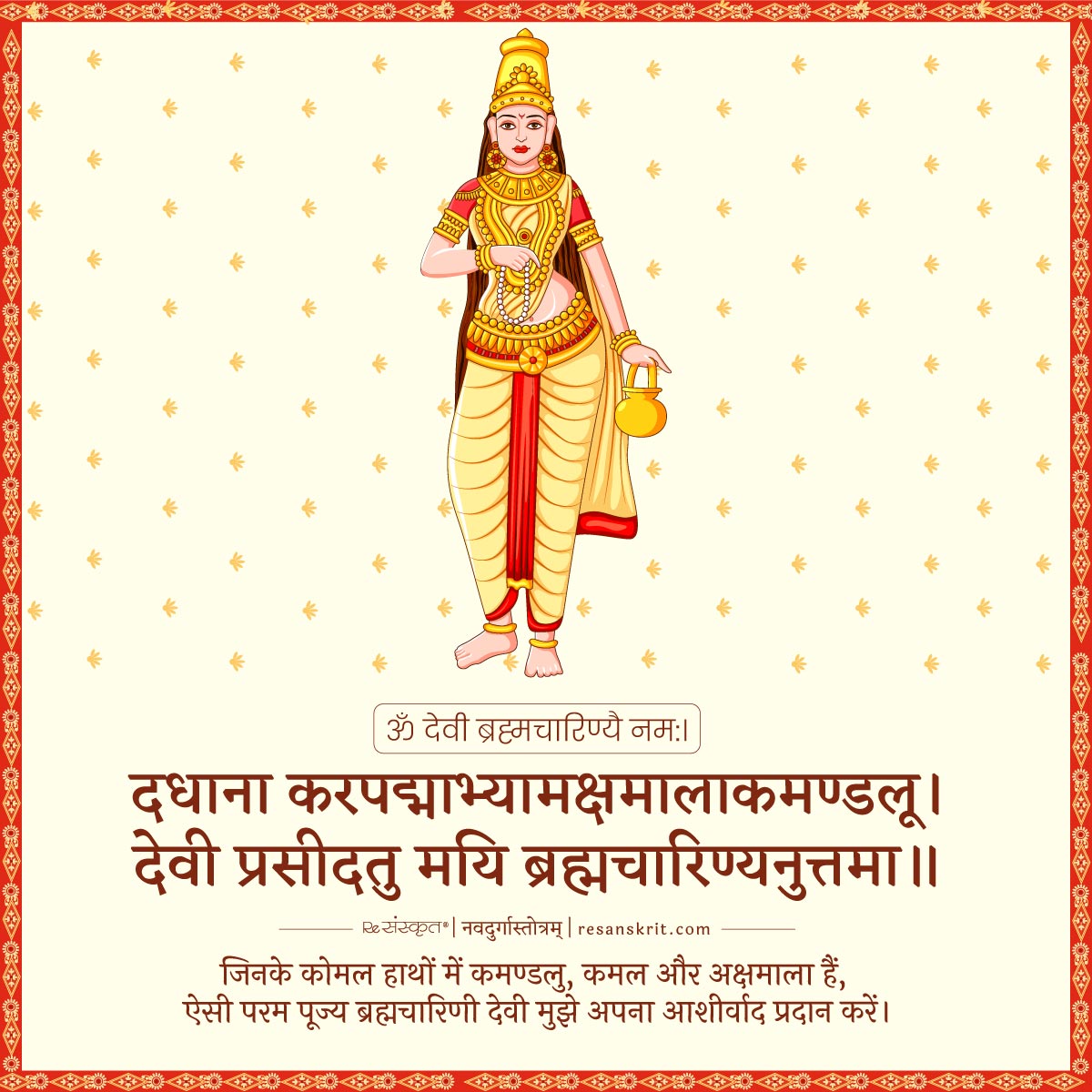
दधाना करपद्माभ्यामक्षमालाकमण्डलू।
देवी प्रसीदतु मयि ब्रह्मचारिण्यनुत्तमा॥
Transliteration:
dadhānā
karapadmābhyāmakṣamālākamaṇḍalū।
devī prasīdatu mayi brahmacāriṇyanuttamā॥
Hindi
translation:
जिनके कोमल हाथों में कमण्डलु, कमल और अक्षमाला हैं,
ऐसी परम पूज्य ब्रह्मचारिणी देवी मुझे अपना आशीर्वाद प्रदान करें।
English
translation:
Holding a water pot, a lotus, and rosemary in her
gentle hands.
May the most exalted Brahmacharini Devi bestow her blessings upon me.
Source: नवदुर्गास्तोत्रम्
Day 3 of 9 - Chandraghanta
Devi Chandraghantā, the third form of Durga, is worshipped as the presiding energy of the Maṇipūra Chakra, the seat of personal power and self-confidence. With her radiant golden aura and resounding bell, she awakens courage, discipline, and self-esteem within the devotee. Just as the Solar Plexus Chakra governs strength, will, and inner fire, honouring Chandraghantā transforms fear into fearlessness, guiding one toward balance, empowerment, and divine protection.

कञ्जनाभां मणिपुरस्थितां तृतीयदुर्गां त्रिनेत्राम्।
खड्गगदात्रिशूलचापधरां पद्मकमण्डलुमालावराभयकराम्॥
Transliteration:
kañjanābhāṃ
maṇipurasthitāṃ tṛtīyadurgāṃ trinetrām।
khaḍgagadātriśūlacāpadharāṃ padmakamaṇḍalumālāvarābhayakarām॥
Hindi
translation:
मैं देवी चन्द्रघण्टा की पूजा करता हूँ, जो मणिपुरचक्र चक्र की अधिष्ठात्री देवी हैं;
जिनका नाभि कमल के समान है; जो दुर्गा का तीसरा रूप हैं; जिनके तीन नेत्र हैं; जिनके हाथों में तलवार, गदा, त्रिशूल,
धनुष, कमल, कमण्डलु और माला है; और जो हमें वर और अभय प्रदान करती हैं।
English
translation:
I worship Goddess Chandraghanta, who governs the Solar Plexus Chakra; is
lotus-naveled; the third form of Durgā; three-eyed; whose various arms hold a sword, a mace, a trident, a bow, a
lotus, a kamandalu and a garland; and who bestows boons and fearlessness upon us.
Source: नवदुर्गास्तुतिः|३|ध्यानम्|२
Chandraghanta (चंद्रघंटा) means "one who has a half-moon shaped like a bell. Her third eye is always opened and she is always ready for war against demons". She is also known as Chandrakhanda, Chandika or Rannchandi. Her worship takes place on the third day of Navaratri (the nine divine nights of Navadurga). She is believed to reward people with her grace, bravery and courage. By her grace, all the sins, distresses, physical sufferings, mental tribulations and ghostly hurdles of the devotees are eradicated.

या देवी सर्वभूतेषु विद्यारूपेण संस्थिता।
नमस्तस्यै नमस्तस्यै नमस्तस्यै नमो नमः॥
Transliteration:
yā devī
sarvabhūteṣu vidyārūpeṇa saṃsthitā।
namastasyai namastasyai namastasyai
namo namaḥ॥
Hindi
translation:
जो सभी प्राणियों में विद्या के रूप में स्थित है, उस
देवी को नमन है।
English
translation:
The goddess who is manifest in all beings as
knowledge, we bow down to her.
Source: तन्त्रोक्तं देवीसूक्तम् (tantroktaṃ devīsūktam)
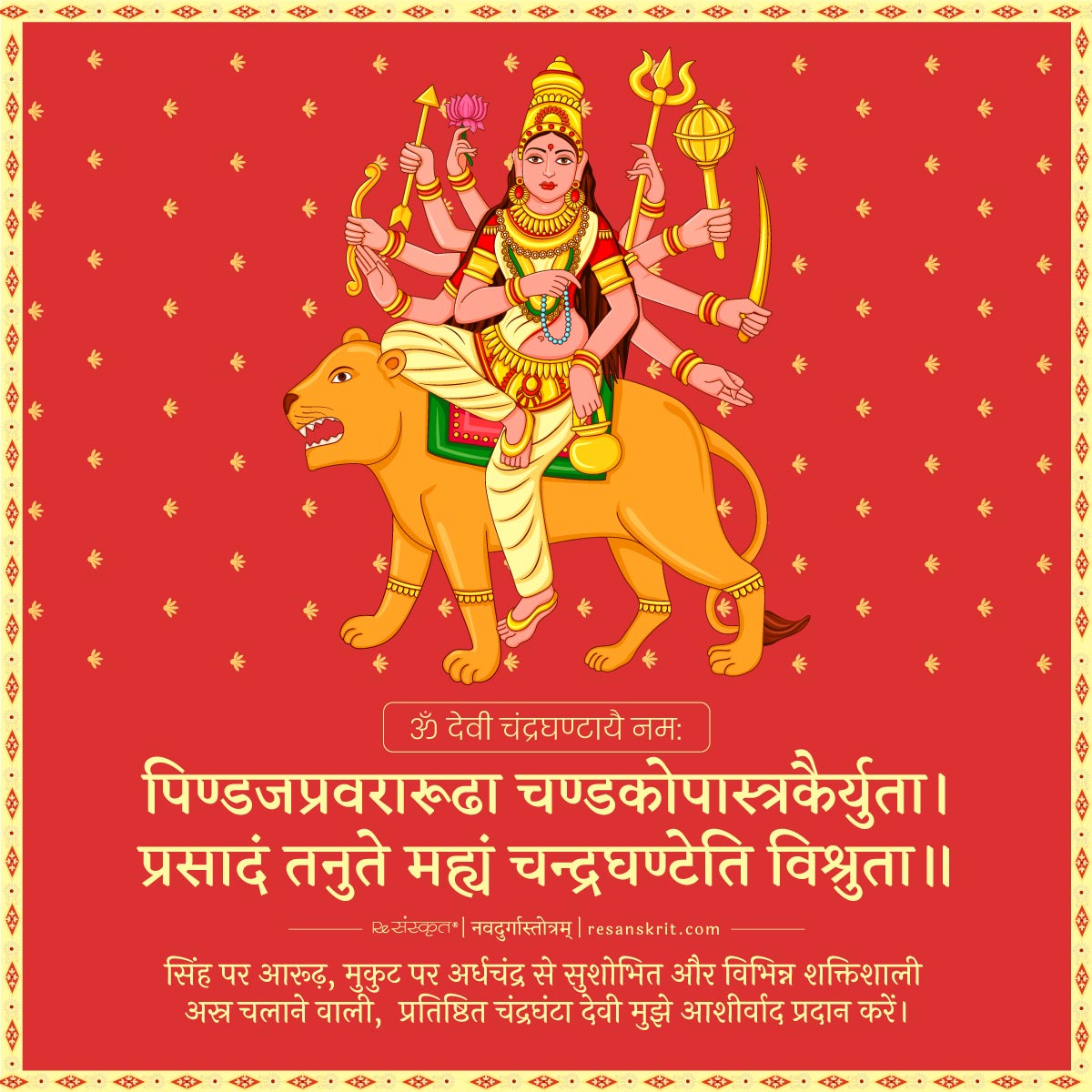
पिण्डजप्रवरारूढा चण्डकोपास्त्रकैर्युता।
प्रसादं तनुते मह्यं चन्द्रघण्टेति विश्रुता॥
Transliteration:
piṇḍajapravarārūḍhā
caṇḍakopāstrakairyutā।
prasādaṃ tanute mahyaṃ candraghaṇṭeti viśrutā॥
Hindi
translation:
सिंह पर आरूढ़, मुकुट पर अर्धचंद्र से सुशोभित और
विभिन्न शक्तिशाली
अस्र चलाने वाली, प्रतिष्ठित चंद्रघंटा देवी मुझे आशीर्वाद प्रदान करें।
English
translation:
Mounted on a lion, adorned with the crescent moon on
the crown,
and wielding various powerful weapons.
May the renowned Chandraghanta Devi bestow blessings upon me.
Source: नवदुर्गास्तोत्रम्
Day 4 of 9 - Kushmāṇḍā
The fourth form of Goddess Durga is called Kushmāṇḍā. She governs and represents the अनाहतचक्र / Anāhata Cakra / Heart Chakra of our body. She represents Love, Compassion, Forgiveness and Connection. Devi Kushmāṇḍā and the Anāhata Cakra are associated with the colour Green. Worshipping Kushmāṇḍā on the fourth day is believed to awaken warmth, vitality, and boundless compassion. She is the radiant mother who created the universe with her divine smile, filling all directions with light and energy. As the Heart Chakra governs love, empathy, and harmony, honoring Kushmāṇḍā helps dissolve ego, cultivate forgiveness, and open oneself to deeper connection with others and the divine.

भास्वरां भानुनिभामनाहतस्थितां चतुर्थदुर्गां त्रिनेत्राम्।
कमण्डलुचापबाणपद्मसुधाकलशचक्रगदाजपवटीधराम्॥
Transliteration:
bhāsvarāṃ
bhānunibhāmanāhatasthitāṃ caturthadurgāṃ trinetrām।
kamaṇḍalucāpabāṇapadmasudhākalaśacakragadājapavaṭīdharām ̰
Hindi
translation:
मैं देवी कूष्माण्डा की पूजा करता हूँ, जो अनाहत चक्र की अधिष्ठात्री देवी हैं; जो सूर्य
की तरह तेजस्वी हैं; दुर्गा का चौथा रूप हैं; जिनके तीन नेत्र हैं और जिनके हाथों में कमण्डलु, धनुष, बाण, कमल, अमृत
का कलश, चक्र, गदा और जपमाला है।
English
translation:
I worship Goddess Kushmanda, who governs the Heart Chakra; is radiant like the sun;
the fourth form of Durgā; three-eyed; whose various arms hold a kamandalu, a bow, arrows, a lotus, a pitcher of
nectar, a discus, a mace and prayer beads.
Source: नवदुर्गास्तुतिः|४|ध्यानम्|२
Kushmanda (कूष्माण्डा), the name signals her main role: Ku means "a little", Ushma means "warmth" or "energy" and Anda means "cosmic egg". Kushmanda is worshipped on the fourth day of the festival of Navaratri and she is believed to improve health and bestow wealth and strength. Goddess Kushmanda has eight hands and because of that, She is also known as Ashtabhuja Devi. It is believed that all the power to bestow Siddhis and Niddhis is located in her Jap Mala.

या देवी सर्वभूतेषु शान्तिरूपेण संस्थिता।
नमस्तस्यै नमस्तस्यै नमस्तस्यै नमो नमः॥
Transliteration:
yā devī
sarvabhūteṣu śāntirūpeṇa saṃsthitā।
namastasyai namastasyai namastasyai
namo namaḥ॥
Hindi
translation:
जो सभी प्राणियों में शान्ति के रूप में स्थित है, उस
देवी को नमन है।
English
translation:
The goddess who is manifest in all beings as peace,
we bow down to her.
Source: तन्त्रोक्तं देवीसूक्तम् (tantroktaṃ devīsūktam)
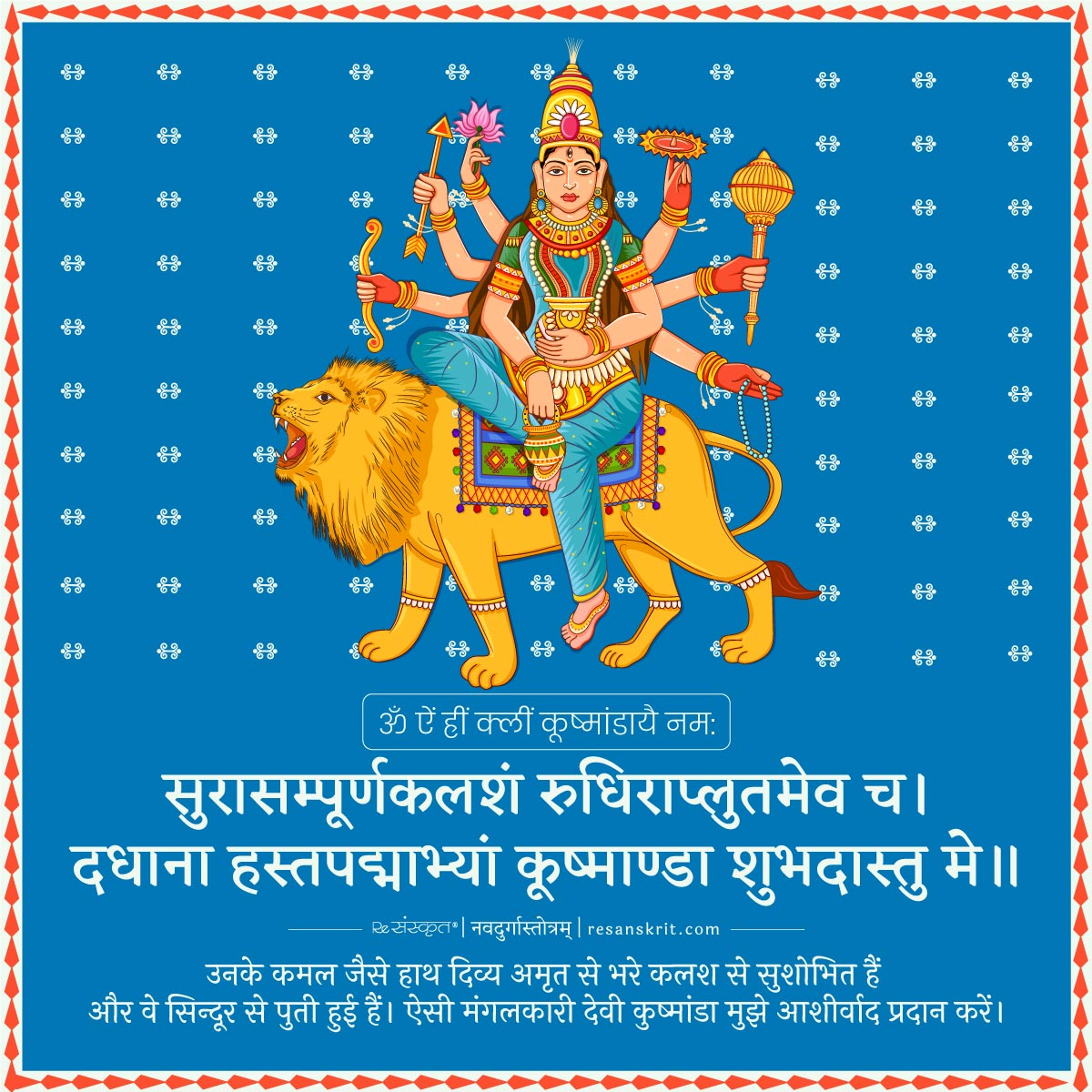
सुरासम्पूर्णकलशं रुधिराप्लुतमेव च।
दधाना हस्तपद्माभ्यां कूष्माण्डा शुभदास्तु मे॥
Transliteration:
surāsampūrṇakalaśaṃ
rudhirāplutameva ca।
dadhānā hastapadmābhyāṃ kūṣmāṇḍā śubhadāstu me॥
Hindi
translation:
उनके कमल जैसे हाथ दिव्य अमृत से भरे कलश से सुशोभित
हैं और वे सिन्दूर से पुती हुई हैं।
ऐसी मंगलकारी देवी कुष्मांडा मुझे आशीर्वाद प्रदान करें।
English
translation:
Her lotus-like hands are adorned with a pot filled
with divine nectar and is smeared with vermilion.
May the auspicious Goddess Kushmanda grant me blessings.
Source: नवदुर्गास्तोत्रम्
Day 5 of 9 - Skandamata
The fifth form of Goddess Durga is called Skandamātā. She governs and represents the विशुद्धचक्र / Viśuddha Cakra / Throat Chakra of our body. She represents Communication, Self-expression, and Truth. Devi Skandamātā and the Viśuddha Cakra are associated with the colour Blue. Worshipping Skandamātā on the fifth day is believed to purify speech, inspire clarity, and awaken the power of truth. She is the serene mother carrying Lord Skanda (Kārtikeya) on her lap, symbolizing nurturing strength and divine wisdom. As the Throat Chakra governs expression and authenticity, honoring Skandamātā helps one overcome fear, speak with compassion, and express the soul’s truth in harmony with the universe.

धवलवर्णां विशुद्धचक्रस्थितां पञ्चमदुर्गां त्रिनेत्राम्।
अभयपद्मयुग्मकरां दक्षिण-ऊरुपुत्रधरां भजेऽहम्॥
Transliteration:
dhavalavarṇāṃ
viśuddhacakrasthitāṃ pañcamadurgāṃ trinetrām।
abhayapadmayugmakarāṃ dakṣiṇa-ūruputradharāṃ bhaje’ham॥
Hindi
translation:
मैं देवी स्कन्दमाता की पूजा करता हूँ, जो विशुद्ध चक्र की अधिष्ठात्री देवी हैं; वे
गोरी और सुंदर हैं; दुर्गा का पाँचवाँ रूप हैं; तीन नेत्रों वाली हैं; उनके एक हाथ में अभय मुद्रा और दूसरे हाथ में
कमल है, और उनकी दाहिनी गोद में उनका पुत्र कार्तिकेय विराजमान है।
English
translation:
I worship Goddess Skandamata, who governs the Throat Chakra; is fair as white; the
fifth form of Durgā; three-eyed; whose one hand holds the Abhaya Mudra and the second holds a lotus, who carries
her son Kartikeya on her right lap.
Source: नवदुर्गास्तुतिः|५|ध्यानम्|२
Skandamātā (स्कन्दमाता) - the name comes from Skanda, an alternate name for the war god Kartikeya, and Mātā, meaning mother. As one of the Navadurga, the worship of Skandamātā takes place on the fifth day of Navaratri. Her abode is in Vishuddha chakra. Skandamātā is four-armed, three-eyed, and rides on a lion. One of her hands is in the fear-dispelling Abhayamudra position while the other is used to hold the infant form of her son Skanda on her lap. Her remaining two hands are typically shown holding lotus flowers.

या देवी सर्वभूतेषु मातृरूपेण संस्थिता।
नमस्तस्यै नमस्तस्यै नमस्तस्यै नमो नमः॥
Transliteration:
yā devī
sarvabhūteṣu mātṛrūpeṇa saṃsthitā।
namastasyai namastasyai namastasyai namo
namaḥ॥
Hindi
translation:
जो सभी प्राणियों में माता के रूप में स्थित है, उस
देवी को नमन है।
English
translation:
The goddess who is manifest in all beings as Mother,
we bow down to her.
Source: तन्त्रोक्तं देवीसूक्तम् (tantroktaṃ devīsūktam)
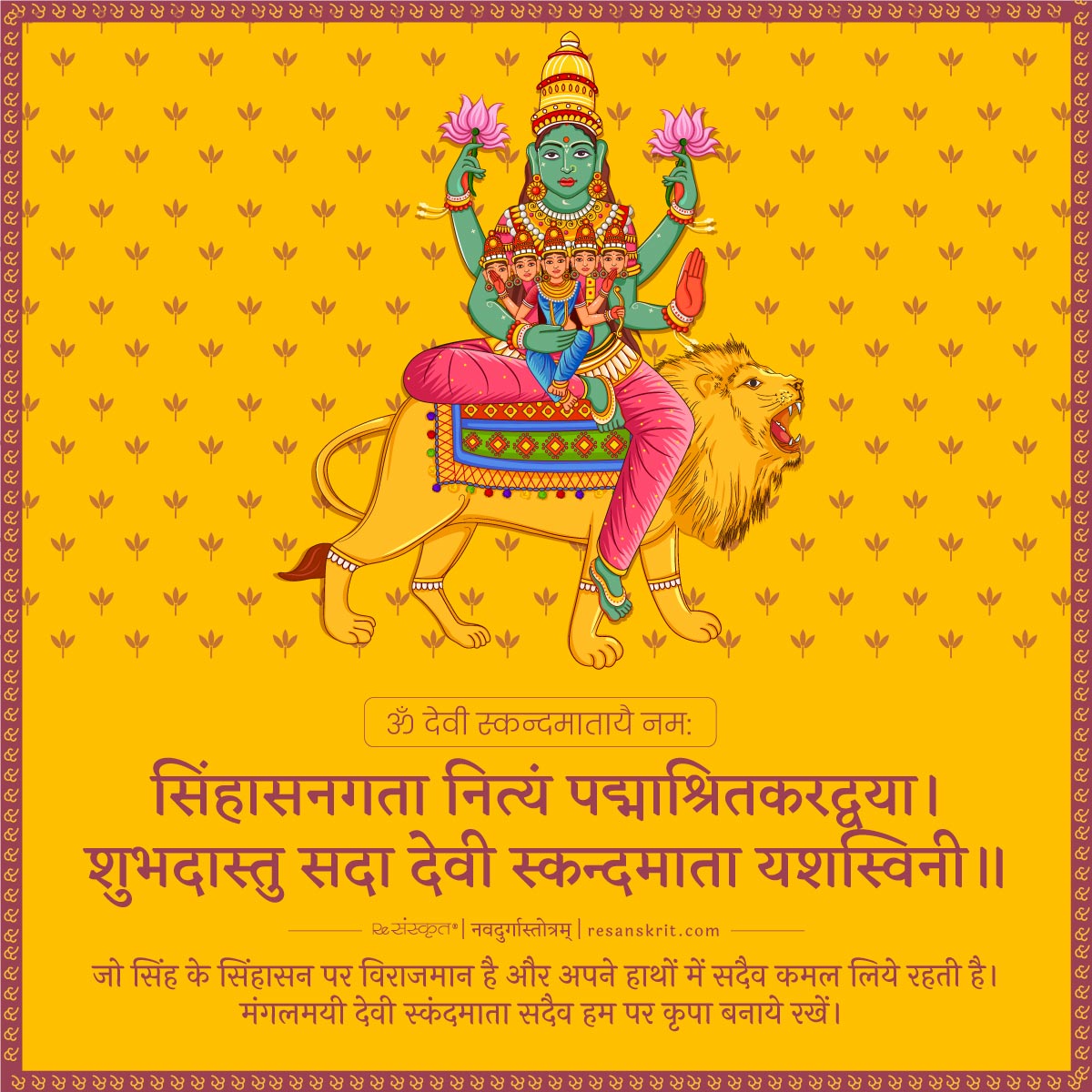
सिंहासनगता नित्यं पद्माश्रितकरद्वया।
शुभदास्तु सदा देवी स्कन्दमाता यशस्विनी॥
Transliteration:
siṃhāsanagatā
nityaṃ padmāśritakaradvayā।
śubhadāstu sadā devī skandamātā yaśasvinī॥
Hindi
translation:
जो सिंह के सिंहासन पर विराजमान है और अपने हाथों में
सदैव कमल लिये रहती है।
मंगलमयी देवी स्कंदमाता सदैव हम पर कृपा बनाये रखें।
English
translation:
Who is seated on a lion's throne,
and is always holding lotuses in her hands.
May the auspicious Devi Skandamata, the illustrious one, always bless us.
Source: नवदुर्गास्तोत्रम्
Day 6 of 9 - Katyayani
The sixth form of Goddess Durga is called Kātyāyanī. She governs and represents the आज्ञा चक्र / Ājñā Cakra / Third-eye Chakra of our body. She represents Intuition, Wisdom, Spiritual Awareness, and Insight. Devī Kātyāyanī and the Ājñā Cakra are associated with the colour Indigo. Worshipping Kātyāyanī on the sixth day is believed to awaken inner vision, sharpen intuition, and strengthen the power of discernment. She is the fierce yet benevolent daughter of Maharshi Kātyāyana, radiant in golden hue, who blesses devotees with courage and fearlessness. As the Third-eye Chakra governs perception and higher wisdom, honouring Kātyāyanī helps one rise beyond illusion, trust inner guidance, and walk the spiritual path with clarity and confidence.

स्वर्णवर्णामाज्ञाचक्रस्थितां षष्ठदुर्गां त्रिनेत्राम्।
वराभीतकरां सगपदधरां कात्यायनसुतां भजामि॥
Transliteration:
svarṇavarṇāmājñācakrasthitāṃ ṣaṣṭhadurgāṃ
trinetrām।
varābhītakarāṃ sagapadadharāṃ kātyāyanasutāṃ bhajāmi॥
Hindi
translation:
मैं देवी कात्यायनी की पूजा करता हूँ, जो आज्ञा चक्र की अधिष्ठात्री देवी हैं; जिनका रंग
स्वर्ण के समान है; जो दुर्गा का छठा रूप हैं; जिनके तीन नेत्र हैं; जो वर और अभय प्रदान करती हैं; जो गदा और अन्य
शस्त्र धारण करती हैं; और महर्षि कात्यायन की पुत्री हैं।
English
translation:
I worship Goddess Katyayani, who governs the Third-eye Chakra; has a golden
complexion; is the sixth form of Durgā; three-eyed; giver of blessings and fearlessness, who holds a mace and
other weapons, daughter of Maharshi Katyayana.
Source: नवदुर्गास्तुतिः|६|ध्यानम्|२
Katyayani (कात्यायनी) is seen as the slayer of the tyrannical demon Mahishasura. In Yoga and Tantra, she is ascribed to the sixth Ajna Chakra or the Third eye chakra and her blessings are invoked by concentrating on this point. She is first mentioned in the Taittiriya Aranyaka part of the Yajurveda. Skanda Purana mentions her being created out of the spontaneous anger of Gods, which eventually led to slaying the demon, Mahishasura, mounted on the lion.

या देवी सर्वभूतेषु वृत्तिरूपेण संस्थिता।
नमस्तस्यै नमस्तस्यै नमस्तस्यै नमो नमः॥
Transliteration:
yā devī
sarvabhūteṣu vṛttirūpeṇa saṃsthitā।
namastasyai namastasyai namastasyai
namo namaḥ॥
Hindi
translation:
जो सभी प्राणियों में वृत्ति (स्वभाव) के रूप में
स्थित है, उस देवी को नमन है।
English
translation:
The goddess who is manifest in all beings as Nature
(character), we bow down to her.
Source: तन्त्रोक्तं देवीसूक्तम् (tantroktaṃ devīsūktam)
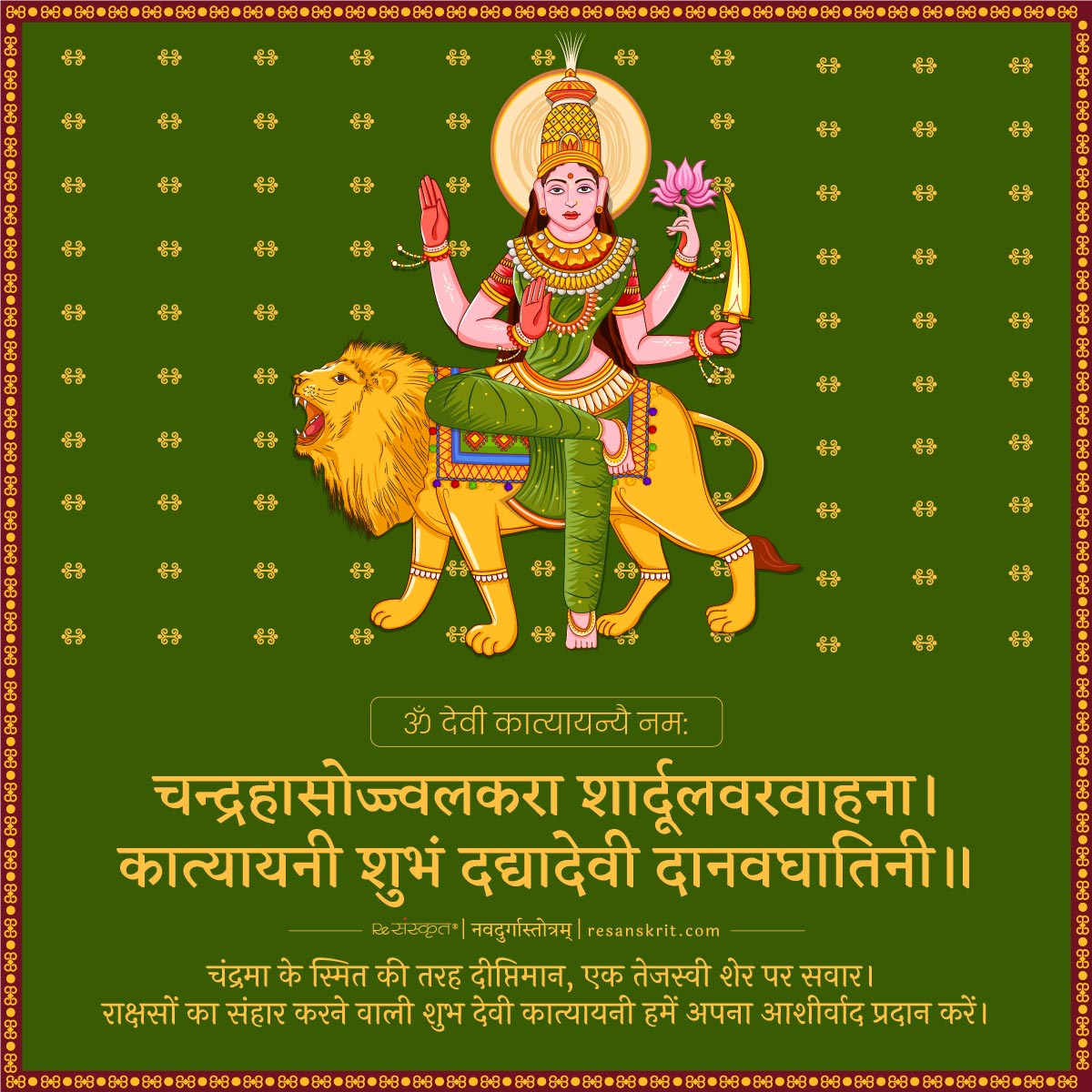
चन्द्रहासोज्ज्वलकरा शार्दूलवरवाहना।
कात्यायनी शुभं दद्यादेवी दानवघातिनी॥
Transliteration:
ssiṃhāsanagatā
nityaṃ padmāśritakaradvayā।
śubhadāstu sadā devī skandamātā yaśasvinī॥
Hindi
translation:
चंद्रमा के स्मित की तरह दीप्तिमान, एक तेजस्वी शेर पर
सवार।
राक्षसों का संहार करने वाली शुभ देवी कात्यायनी हमें अपना आशीर्वाद प्रदान करें।
English
translation:
Radiant like the moon's smile, riding on a
magnificent lion.
May the auspicious Devi Katyayani,
the destroyer of demons, bestow her blessings upon us.
Source: नवदुर्गास्तोत्रम्
Day 7 of 9 - Kalaratri
The seventh form of Goddess Durga is called Kālrātri. She governs and represents the सहस्रार चक्र / Sahasrāra Cakra / Crown Chakra of our body. She represents Spiritual Connection, Enlightenment, and Self-actualization. Devī Kālrātri and the Sahasrāra Cakra are associated with the colour Violet. Worshipping Kālarātri on the seventh day is believed to destroy ignorance, remove fear, and open the gateway to divine realization. Though fierce in form, with a dark complexion, unbound hair, and adorned with lightning and skulls, she embodies the deepest spiritual power. As the Crown Chakra governs liberation and cosmic unity, honouring Kālrātri helps one transcend worldly attachments, embrace fearlessness, and experience oneness with the infinite.

करालवदनां घोरां मुक्तकेशीं चतुर्भुजाम्।
कालरात्रिं करालीं च विद्युन्मालाविभूषिताम्॥
Transliteration:
karālavadanāṃ
ghorāṃ muktakeśīṃ caturbhujām।
kālarātriṃ karālīṃ ca vidyunmālāvibhūṣitām॥
Hindi
translation:
मैं देवी कालरात्रि की पूजा करता हूँ, जो उनका चेहरा भयानक है; वे घोर हैं; उनके बाल
खुले हैं; उनके चार हाथ हैं, वे डरावनी हैं और बिजली तथा खोपड़ियों से सुशोभित हैं। (वे सहस्त्रार चक्र की
अधिष्ठात्री देवी हैं)
English
translation:
I worship Goddess Kālarātri; who has a terrible face; is fierce; has loose hair; is
four-armed, is dreadful, adorned with lightning and skulls. (She is also associated with the Crown Chakra)
Source: नवदुर्गास्तुतिः|७|ध्यानम्|१
Kalaratri (कालरात्रि) is considered the fiercest form of the Mother Goddess, her appearance itself invoking fear. This form of Goddess is believed to be the destroyer of all demon entities, ghosts, evil spirits and negative energies, who flee upon knowing of her arrival. Kaalratri is also known as Shubankari (शुभंकरी) - meaning auspicious/doing good in Sanskrit, due to the belief that she always provides auspicious results to her devotees. Hence, it is believed that she makes her devotees fearless.

या देवी सर्वभूतेषुच्छायारूपेण संस्थिता।
नमस्तस्यै नमस्तस्यै नमस्तस्यै नमो नमः॥
Transliteration:
yā devī
sarvabhūteṣucchāyārūpeṇa saṃsthitā।
namastasyai namastasyai namastasyai
namo namaḥ॥
Hindi
translation:
जो सभी प्राणियों में छाया के रूप में स्थित है, उस
देवी को नमन है।
English
translation:
The goddess who is manifest in all beings the power
of reflection, we bow down to her.
Source: तन्त्रोक्तं देवीसूक्तम् (tantroktaṃ devīsūktam)
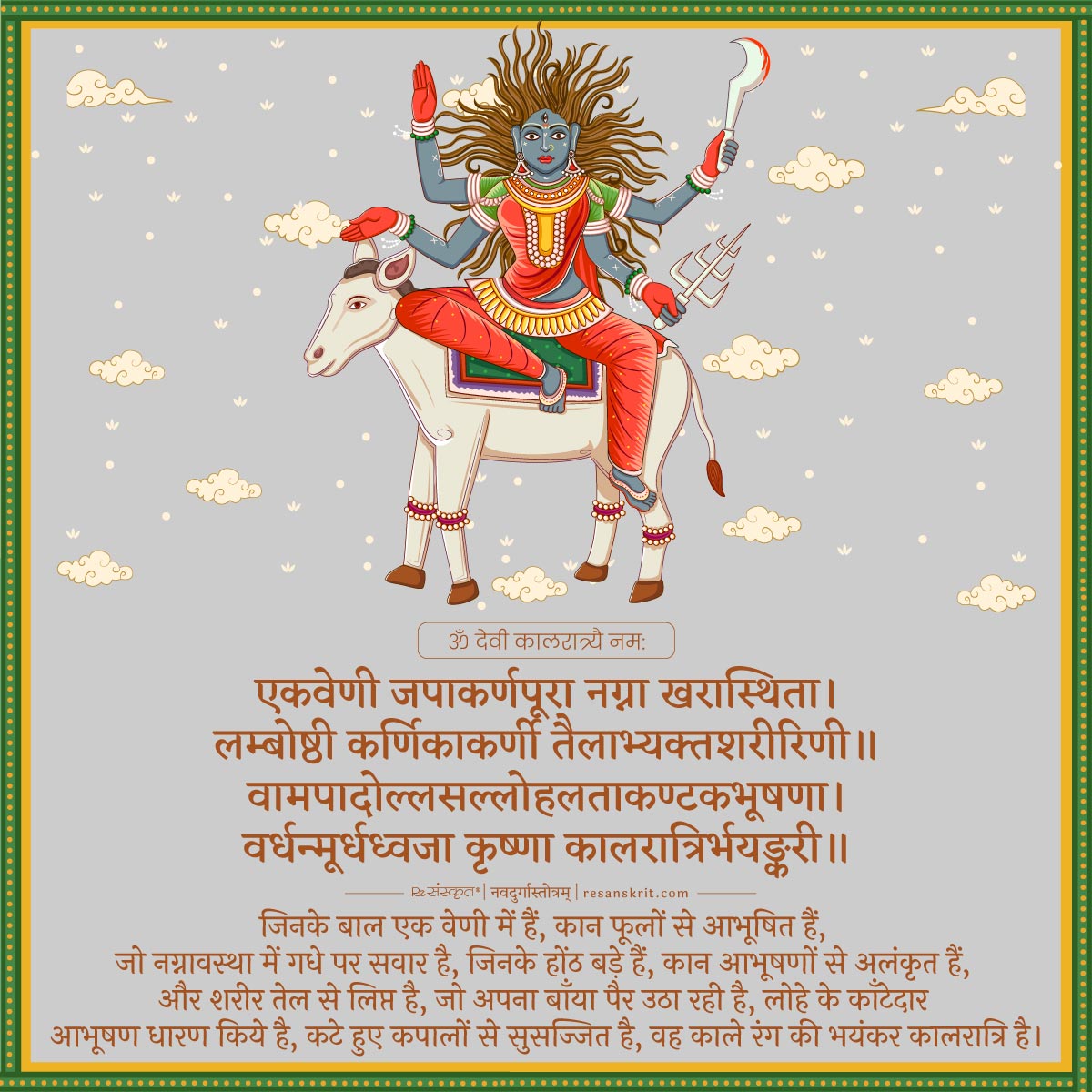
एकवेणी जपाकर्णपूरा नग्ना खरास्थिता।
लम्बोष्ठी कर्णिकाकर्णी तैलाभ्यक्तशरीरिणी॥
वामपादोल्लसल्लोहलताकण्टकभूषणा।
वर्धन्मूर्धध्वजा कृष्णा कालरात्रिर्भयङ्करी॥
Transliteration:
ekaveṇī
japākarṇapūrā nagnā kharāsthitā।
lamboṣṭhī karṇikākarṇī tailābhyaktaśarīriṇī॥
vāmapādollasallohalatākaṇṭakabhūṣaṇā।
vardhanmūrdhadhvajā kṛṣṇā kālarātrirbhayaṅkarī॥
Hindi
translation:
जिनके बाल एक वेणी में हैं, कान फूलों से आभूषित हैं,
जो नग्नावस्था में गधे पर सवार है, जिनके होंठ बड़े हैं, कान आभूषणों से अलंकृत हैं,
और शरीर तेल से लिप्त है, जो अपना बाँया पैर उठा रही है, लोहे के काँटेदार आभूषण
धारण किये है, कटे हुए कपालों से सुसज्जित है, वह काले रंग की भयंकर कालरात्रि है।
English
translation:
One with a single braid of hair, ears adorned with
flowery ornaments, she is unclad and mounted on a donkey, One with large lips,
ears adorned with ornaments, and body smeared with oil, She lifts her left leg
forth, wearing thorny iron ornaments, Adorned with severed skulls, the fearsome
Kālarātri is black in complexion.
Source: नवदुर्गास्तोत्रम्
Day 8 of 9 - Mahagauri
The eighth form of Goddess Durga is called Mahāgaurī. She governs and represents the सोम चक्र / Soma Cakra / Lunar Chakra of our body. She represents Spiritual Contentment, Youthfulness, Transformation of the Mind and Senses, and Healing. Devī Mahāgaurī and the Soma Cakra are associated with the colour Silver. Worshipping Mahāgaurī on the eighth day is believed to bring purity, serenity, and inner healing. Gentle in appearance, clothed in silk, adorned with ornaments, and radiating calm grace, she embodies the rejuvenating power of the moon. As the Lunar Chakra governs peace, renewal, and higher transformation, honouring Mahāgaurī helps one cleanse past burdens, embrace simplicity, and find lasting contentment within.

पूर्णेन्दुनिभां गौरीं सोमचक्रस्थिताम् अष्टमदुर्गां त्रिनेत्राम्।
वराभीतिकरां त्रिशूलडमरूधरां महागौरीं भजेऽहम्॥
Transliteration:
pūrṇendunibhāṃ
gaurīṃ somacakrasthitām aṣṭamadurgāṃ trinetrām।
varābhītikarāṃ triśūlaḍamarūdharāṃ mahāgaurīṃ bhaje’ham॥
Hindi
translation:
मैं देवी महागौरी की पूजा करता हूँ, जो सोम चक्र की अधिष्ठात्री हैं, पूर्ण चंद्रमा के
समान तेजस्वी हैं, दुर्गा का आठवां रूप हैं, तीन नेत्रों वाली हैं, वर और अभय प्रदान करती हैं, त्रिशूल और डमरू धारण
करती हैं।
English
translation:
I worship Goddess Mahāgaurī, who governs the Lunar Chakra, is as radiant as the full
moon, the eight form of Durgā, three-eyed, bestows with boons and fearlessness, holds a trident and a damarū.
Source: नवदुर्गास्तुतिः|८|ध्यानम्|२
Mahagauri (महागौरी) has the power to fulfill all the desires of her devotees. The name Mahagauri means extremely bright, clean complexioned, with a shine like the moon. (Mahā, महा = great; Gaurī, गौरी = bright, clean). Mahagauri is usually depicted with four hands, the hands holding a trident, fear dispelling gesture, and drum, while the fourth is in a blessing gesture.She rides a white bull, usually shown wearing white clothes.

या देवी सर्वभूतेषु कान्तिरूपेण संस्थिता।
नमस्तस्यै नमस्तस्यै नमस्तस्यै नमो नमः॥
Transliteration:
yā devī
sarvabhūteṣu kāntirūpeṇa saṃsthitā।
namastasyai namastasyai namastasyai
namo namaḥ॥
Hindi
translation:
जो सभी प्राणियों में कान्ति के रूप में स्थित है, उस
देवी को नमन है।
English
translation:
The goddess who is manifest in all beings as beauty,
we bow down to her.
Source: तन्त्रोक्तं देवीसूक्तम् (tantroktaṃ devīsūktam)
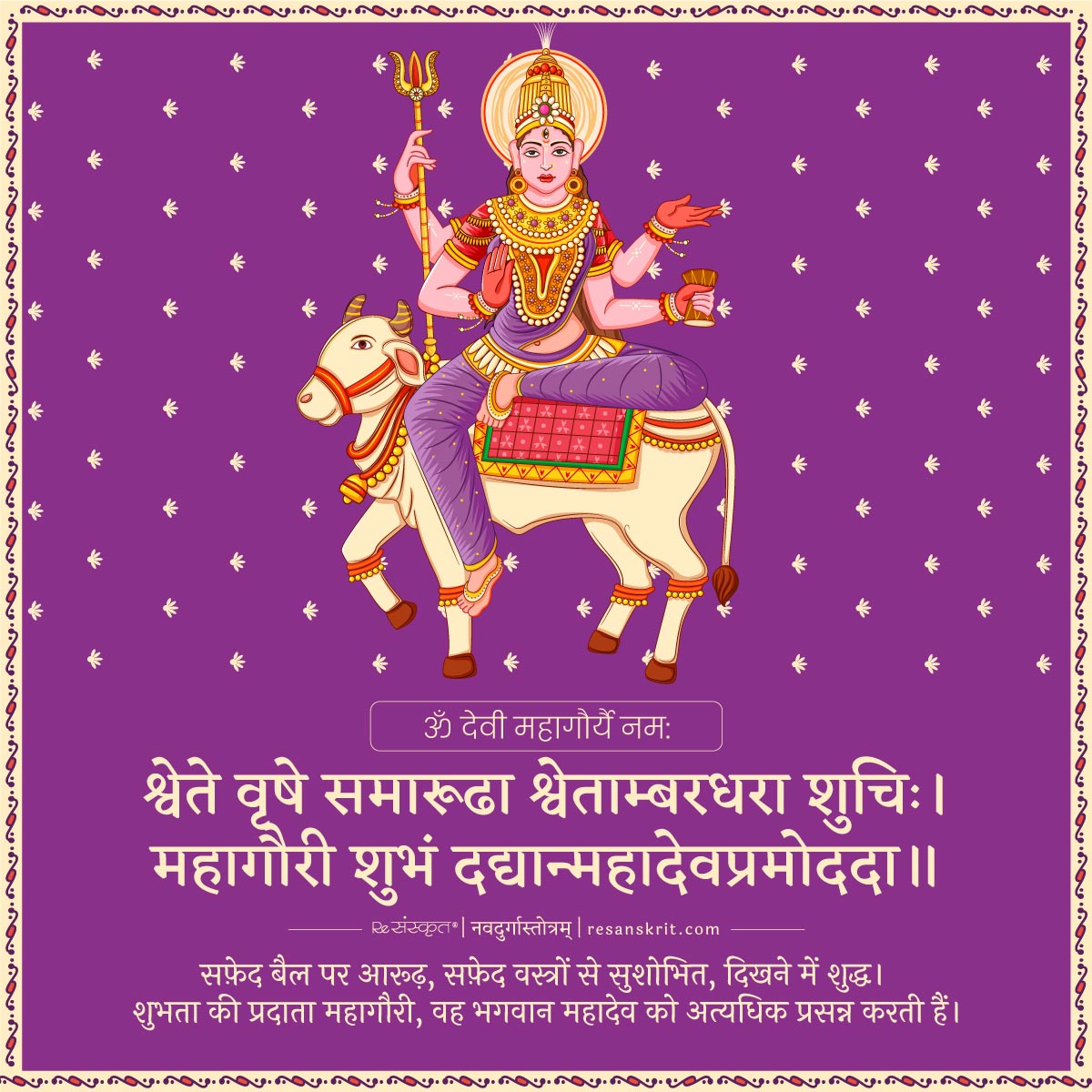
श्वेते वृषे समारूढा श्वेताम्बरधरा शुचिः।
महागौरी शुभं दद्यान्महादेवप्रमोददा॥
Transliteration:
śvete
vṛṣe
samārūḍhā śvetāmbaradharā śuciḥ।
mahāgaurī śubhaṃ dadyānmahādevapramodadā॥
Hindi
translation:
सफ़ेद बैल पर आरूढ़, सफ़ेद वस्त्रों से सुशोभित, दिखने
में शुद्ध।
शुभता की प्रदाता महागौरी, वह भगवान महादेव को अत्यधिक प्रसन्न करती हैं।
English
translation:
Mounted on a white bull, adorned in white garments,
pure in appearance.
May Mahagauri, the bestower of auspiciousness, bring great delight to Lord
Mahadeva.
Source: नवदुर्गास्तोत्रम्
Day 9 of 9 - Siddhidhatri
The ninth form of Goddess Durga is called Siddhidātrī. She governs and represents the निर्वाण चक्र / Nirvāṇa Cakra / Liberation Chakra of our body. She represents Ultimate Awakening, Fulfillment, and Liberation. Devī Siddhidātrī and the Nirvāṇa Cakra are associated with the colour Bright White. Worshipping Siddhidātrī on the ninth day is believed to bestow siddhis (spiritual perfections), remove ignorance, and grant liberation. She is the supreme goddess who blesses devotees with accomplishment, abundance, and the highest state of realization, transcending the three puruṣārthas. As the Liberation Chakra signifies completion and union with the divine, honouring Siddhidātrī helps one dissolve ego, attain inner freedom, and realize the eternal truth of existence.

स्वर्णवर्णनिर्वाणचक्रस्थितां नवमदुर्गां त्रिनेत्राम्।
शङ्खचक्रगदापद्मधरां सिद्धिदात्रीं भजेऽहम्॥
Transliteration:
svarṇavarṇanirvāṇacakrasthitāṃ navamadurgāṃ trinetrām।
śaṅkhacakragadāpadmadharāṃ siddhidātrīṃ bhaje’ham॥
Hindi
translation:
मैं देवी सिद्धिदात्री की पूजा करता हूँ, जो निर्वाण चक्र की अधिष्ठात्री हैं; स्वर्ण वर्ण वाली हैं; दुर्गा का नौवां रूप हैं; तीन नेत्रों वाली हैं;
शंख, चक्र, गदा और कमल धारण करती हैं।
English
translation:
I worship Goddess Siddhidātrī, who governs the Liberation Chakra; has a golden complexion; the ninth form of Durgā;
three-eyed; holds a conch, a disc, a mace and a lotus.
Source: नवदुर्गास्तुतिः|९|स्थोत्रम्|२
Siddhidhatri (सिद्धिदात्री) - Siddhi means supernatural power or meditative ability, and Dhatri means giver or awarder. In this form Durga is seated on a lotus and is four-armed. She holds a lotus, mace, Chakra and shankha. Siddhidhatri removes ignorance and provides the knowledge.

या देवी सर्वभूतेषु बुद्धिरूपेण संस्थिता।
नमस्तस्यै नमस्तस्यै नमस्तस्यै नमो नमः॥
Transliteration:
yā devī
sarvabhūteṣu buddhirūpeṇa saṃsthitā।
namastasyai namastasyai namastasyai
namo namaḥ॥
Hindi
translation:
जो सभी प्राणियों में बुद्धि के रूप में स्थित है, उस
देवी को नमन है।
English
translation:
The goddess who is manifest in all beings as
intellect, we bow down to her.
Source: तन्त्रोक्तं देवीसूक्तम् (tantroktaṃ devīsūktam)
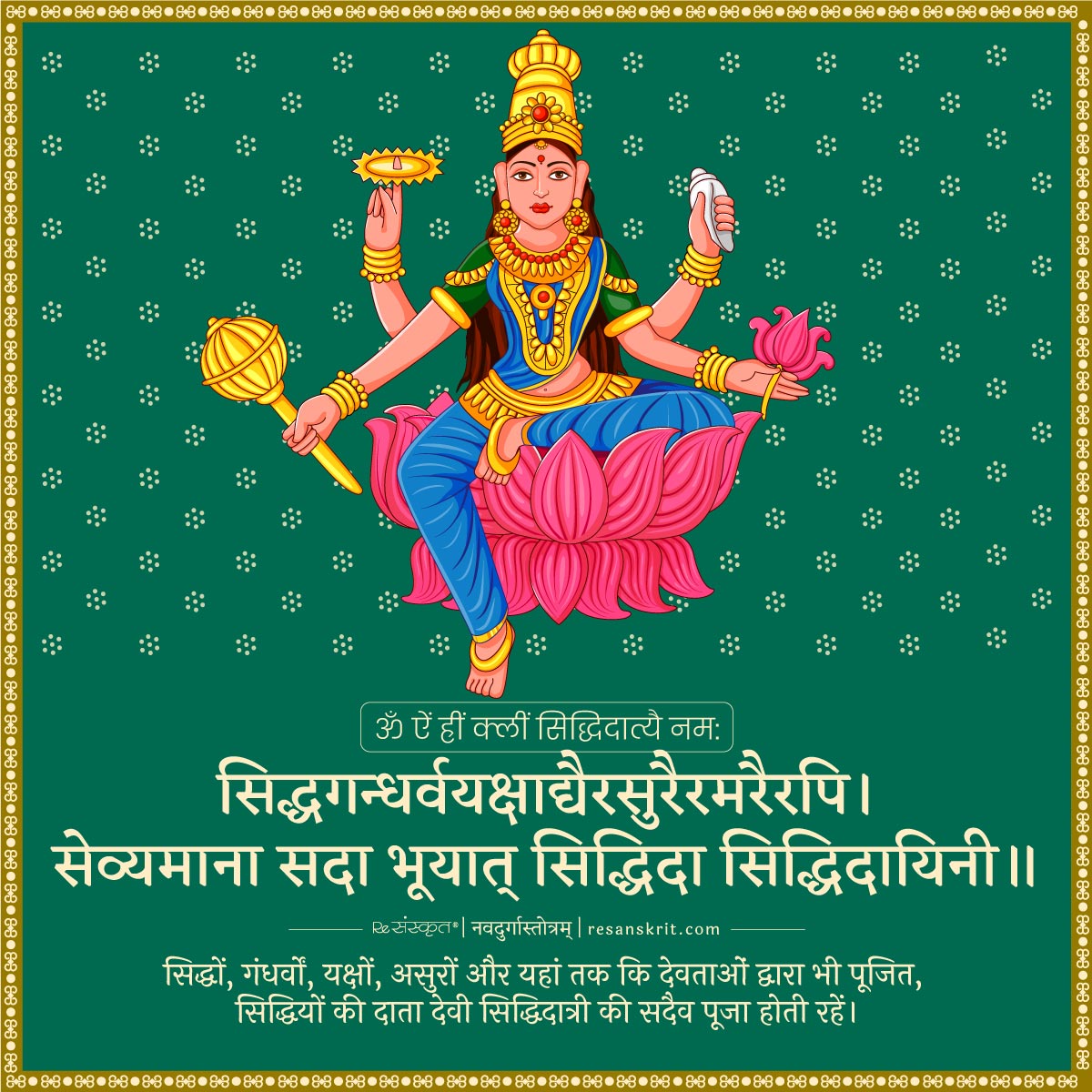
सिद्धगन्धर्वयक्षाद्यैरसुरैरमरैरपि।
सेव्यमाना सदा भूयात् सिद्धिदा सिद्धिदायिनी॥
Transliteration:
siddhagandharvayakṣādyairasurairamarairapi।
sevyamānā sadā bhūyāt siddhidā siddhidāyinī॥
Hindi
translation:
सिद्धों, गंधर्वों, यक्षों, असुरों और यहां तक कि
देवताओं द्वारा भी पूजित,
सिद्धियों की दाता देवी सिद्धिदात्री की सदैव पूजा होती रहें।
English
translation:
Worshipped by Siddhas (perfected beings), Gandharvas
(celestial musicians),
Yakshas (nature spirits), Asuras (demons), and even Devas (celestial beings).
May Siddhidatri, the bestower of accomplishments, always be worshipped.
Source: नवदुर्गास्तोत्रम्

Source: कनकधारा-स्तोत्रम् 18
Sanskrit
transcript:
सरसिजनिलये सरोजहस्ते धवलतमांशुगन्धमाल्यशोभे
।
भगवति हरिवल्लभे मनोज्ञे त्रिभुवनभूतिकरि प्रसीद मह्यम्
॥
Transliteration:
sarasijanilaye
sarojahaste dhavalatamāṃśugandhamālyaśobhe ।
bhagavati harivallabhe manojñe
tribhuvanabhūtikari prasīda mahyam ॥
Hindi
translation:
आप कमल में रहने वाले, हाथ में कमल धारण करने वाले,
सफेद वस्त्रों, सुगंधों और मालाओं से सुशोभित,
सुंदर विष्णुप्रिया और तीनों
लोकों को समृद्धि देनेवाली हैं। हे देवी मुझ पर कृपा करो।
तीनों लोकों को
समृद्धि देनेवाली, हे देवी, मुझ पर कृपा करो ।
English
translation:
You are the one who lives in the lotus, holding the
lotus in your hand,
adorned with white garments, scents, and garlands,
the
beautiful Vishnupriya and the one who gives prosperity to the three worlds.
O
Goddess, bless me

Source: Bhavānyaṣṭakam 7
Sanskrit
transcript:
विवादे विषादे प्रमादे प्रवासे जले चानले पर्वते
शत्रुमध्ये।
अरण्ये शरण्ये सदा मां प्रपाहि गतिस्त्वं
गतिस्त्वं त्वमेका भवानि॥
Transliteration:
vivāde
viṣāde
pramāde pravāse jale cānale parvate śatrumadhye।
araṇye śaraṇye sadā māṃ
prapāhi gatistvaṃ gatistvaṃ tvamekā bhavāni॥
Hindi
translation:
विवाद, विषाद, प्रमाद, या प्रवास में, जल, अग्नि, अथवा
पर्वत में, शत्रुओं के बीच, और जंगल में, मेरी रक्षा करो, तुम ही शरण्य हो। तुम ही
रास्ता हो, एकमात्र तुम ही रास्ता हो, माँ भवानी।
English
translation:
During the dispute, despair, intoxication, or
travelling, in water, fire, or mountains, amidst enemies, and in the forest,
protect me, for you are my refuge. You are the way, the only way, Bhavani!

Bring Sanskrit home!
ReSanskrit merchandise starting at ₹ 229.
Browse Collection!

Source: Markandeya Purana, Devi Mahatyam 88.9
Sanskrit
transcript:
सर्व मङ्गल माङ्गल्ये शिवे
सर्वार्थसाधिके।
शरण्ये त्र्यम्बके गौरि नारायणि नमोऽस्तु
ते॥
Transliteration:
sarva
maṅgala
māṅgalye śive sarvārthasādhike।
śaraṇye tryambake gauri nārāyaṇi namo’stu te॥
Hindi
translation:
सभी मंगलो में मङ्गलमयी, कल्याणकारी, सभी मनोरथो को
पूर्ण करने वाली,
शरणागत वत्सला, तीन नेत्रो वाली शिव की पत्नी आपको नमस्कार है।
English
translation:
Auspiciousness of all things auspicious! O consort of
Shiva, fulfiller of all our goals!
Our only refuge! O three-eyed Gauri! O
Narayani! Our salutations to you.

Source: Devyāparādha-Kṣamāpana Stotra 10
Sanskrit
transcript:
आपत्सु मग्नः स्मरणं त्वदीयं करोमि दुर्गे
करुणार्णवेशि ।
नैतच्छठत्वं मम भावयेथाः क्षुधातृषार्ता
जननीं स्मरन्ति ॥१०॥
Transliteration:
āpatsu
magnaḥ
smaraṇaṃ tvadīyaṃ karomi durge karuṇārṇaveśi ।
naitacchaṭhatvaṃ mama
bhāvayethāḥ kṣudhātṛṣārtā jananīṃ smaranti ॥10॥
Hindi
translation:
जब भी मैं समस्याओं में डूबता हूँ, मैं आपका स्मरण करता
हूँ। यह मेरी सच्ची भावना है, कोई झूठ नहीं।
क्योंकि, अगर कोई बालक भूखा और
प्यासा हो, तो वह अपनी माता का ही स्मरण करता है।
English
translation:
Whenever I am sunk in difficulties in life, o Mother
Durga, I remember you, an ocean of compassion. These are my true feelings for
you and not falsity.
Because When children are afflicted with hunger and
thirst, they naturally remember their Mother (only).
Every year different colors, what is the math behind it?
The secret of the color change lies in the weekday on which Pratipada, the first day of Navaratri, falls. The remaining eight days follow a fixed cycle of colors. The first Monday, Tuesday, Wednesday, Thursday, Friday, Saturday and Sunday will be having White, Red, Royal blue, Yellow, Green, Grey and Orange, respectively. Hence, 7 colors are covered by one-week cycle. In second cycle of week, the first repeating week day follows Pink and purple and/or sky blue, alternatively. Hence, 2 colors cover the remaining 2 days.
Each color has different significance
and brings different effect in one’s life, here’s what they mean
–
Color Significance
Royal blue – Strong energy and
tranquility
Yellow – Happiness, bring optimism and
confidence
Green – Represents prosperity and unconditional
love
Grey – Show dignity & connects to the divine power
and provide protection
Orange – The color of fame, name, and
money
White – The symbol of peace, prayer, faith, and
strength
Red – This is the favorite color of goddess Durga,
it defines power and passion
Pink – Represents hope and the
new beginning
What exactly is fasting during Navratri?
Fast does not mean ‘not eating’. Rather it basically means controlling the desires and simultaneously cultivating positive mental attitudes. Desires can be of many types: to eat tasty food, smell, listen to a particular music, lust etc.
Fast, therefore, can be of many types. Food fast means controlling the desires for food items which you otherwise may not resist eating.
In Navratri, during the first three days, a person is required to indulge in activities which reduce the negativity in the body.
The physical purification involves regular bath (of the external body as well as various orifices); mental bath which involves self-confession exercises, and willful attempts not to think negative.
During these days, a person tries to restrain himself/herself from thinking, speaking or doing any activity which can harm another person. These negative thoughts should also not be suppressed or repressed as otherwise, they will manifest into some internal diseases.
The next three days, after the negativity in the mind, has been reduced, involves building positivity in the mind by way of various positive mental exercises. The last three days involve reading and understanding good scriptures and learning from the sins of others.
Once you have bid goodbye to negativity in the first three days (representing Kali) and have built up happiness and positivity in the mind (representing Lakshmi) the only thing left is to acquire spiritual knowledge (representing Saraswati).
During these last three days, a person is purified enough to understand and grasp the knowledge of ‘Self’ and to understands and discriminate between good and bad.
After the nine days of self-discipline is complete, the person acquires inner happiness which is nothing but one’s exposure or appointment with the true self or the consciousness (Rama). That is what Dussehra is with the killing of Tamas (Kumbhakarana), Rajas (Meghnath) and ego (Ravana).
The same interpretation lies in the Navratri ending up with Dussehra – the win over the ego and attaining inner happiness.
What is the scientific reason behind fasting during Navratri?
Besides religious perspective there is a scientific overview of fasting, fasting helps the human body to perform 3 main metabolic activities;
- Detoxification – since Navratri is a biannual festival; first, at the beginning of summer and second, at the beginning of winter. These are two juncture of seasonal change, this is the period when the human body is vulnerable and susceptible to fall sick; therefore it’s necessary to have a light diet and help the body cells to produce antioxidants which help in removing the waste products to avoid causing further hazards to the body.
- Mindfulness – fasting gives our digestive system time to rest. During fasting human body consumes fat as primary source of energy because of lack of carbohydrates in diet and the metabolic end product of fat is ketone bodies, ketone bodies are the energy source of brain and it promotes more acetylcholine release from nerves which finally increases one’s concentration and calculating ability and it stimulates the release of serotonin which is the hormone for happiness.
- Self-discipline – fasting brings the human body and mind to a more disciplined and ideal state which is difficult to achieve in daily life activities without fasting, this, in turn, helps in weight loss too.
Conclusion
After reading all of this, it definitely makes us think how rich and noble our traditions are. It is easy to misunderstand that all of our festivals are a form of penance to some or other god, but truly, in a subtle way, these are meant to help our selves in growing us into better human beings.

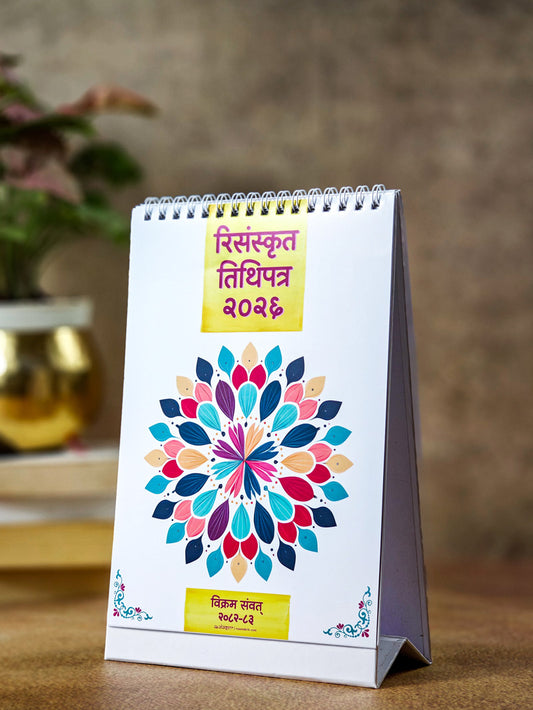

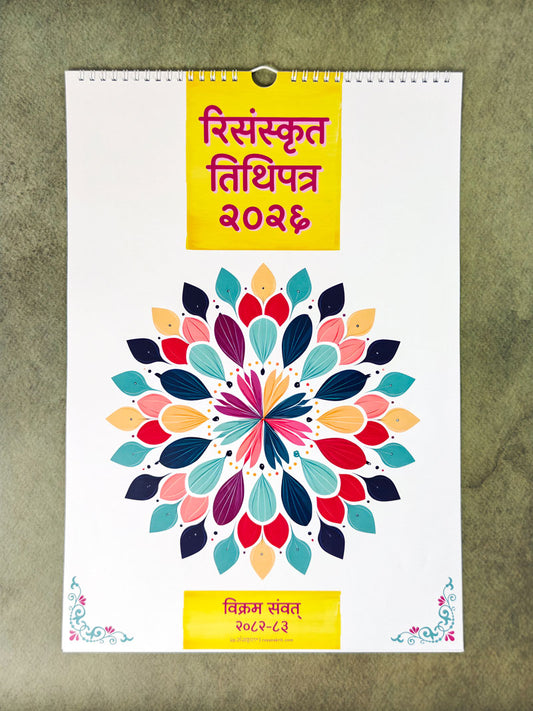

![[New Edition] ReSanskrit® 365 Days of Sanskrit Wisdom | Daily Sanskrit Quotes | With 100+ New Quotes, Hindi & English Translations🆕](http://resanskrit.com/cdn/shop/files/365-calendar-resanskrit-front-hero-shot_533x.jpg?v=1762351171)
![[New Edition] ReSanskrit® 365 Days of Sanskrit Wisdom | Daily Sanskrit Quotes | With 100+ New Quotes, Hindi & English Translations🆕](http://resanskrit.com/cdn/shop/files/365-calendar-resanskrit-quote-shot1_533x.jpg?v=1762351193)
![[Please Read Note] 2025 - Hindu Wall Calendar (Vikram Samvat 2081-82) - ReSanskrit](http://resanskrit.com/cdn/shop/files/Month-image_3_533x.jpg?v=1738386056)
![[Please Read Note] 2025 - Hindu Wall Calendar (Vikram Samvat 2081-82) - ReSanskrit](http://resanskrit.com/cdn/shop/files/Hero-image_1_withmessage_533x.jpg?v=1738386056)
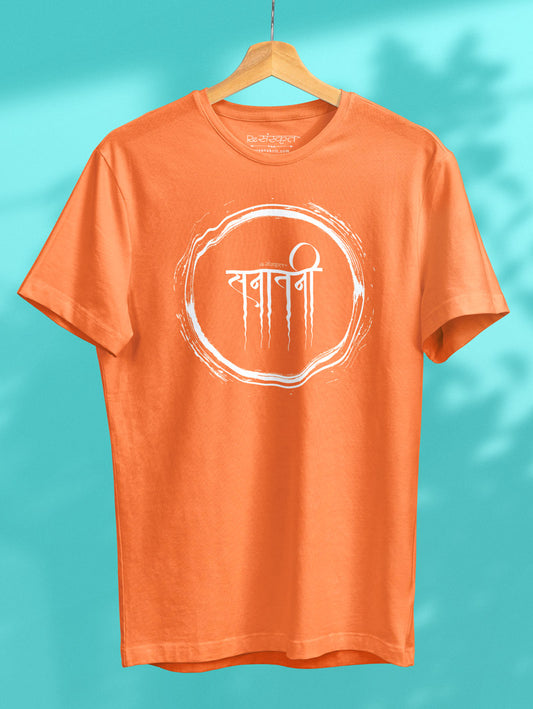


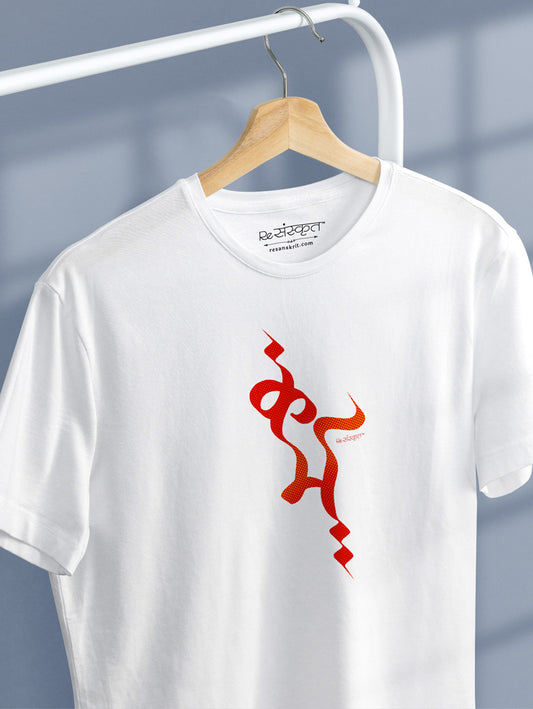
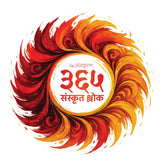

![[Part 2] Relevant Sanskrit Shlokas with Meaning in Hindi & English](http://resanskrit.com/cdn/shop/articles/Relevant-Sanskrit-Shlokas-Article-Cover-image-part-2_4499da7e-f9d9-46a6-b615-35f58befb606_165x.jpg?v=1765027232)
9 Comments
I am deeply, truly grateful for this beautiful and insightful explanation of Navratri 🌸🪔. The way everything was described — from the spiritual essence of each day to the detailed guidance on which Devi is worshipped and why — was simply remarkable ✨💫. It felt less like reading an article and more like walking through a sacred journey filled with devotion, wisdom, and tradition 🌼👑.
What touched me even more was the inclusion of Sanskrit ślokas 📜 along with their meanings in Hindi and English — such a thoughtful and profound addition 🙌💖. It not only deepened my understanding but also allowed me to feel the spiritual vibrations and ancient wisdom behind each mantra 🪷📖.
This explanation beautifully connects the cultural, spiritual, and devotional aspects of Navratri, making it a true treasure for anyone wishing to celebrate the festival in its purest form 🌷🌙. Thank you so much for creating something so meaningful and enlightening — I will surely cherish and revisit it every year during.
Hi
Happy Navratri
I want to share this in my Facebook, please permit.
Thank you
Very well written
This page was accidentally thrown to me by Google while searching the Concepts of Maha Navarathri Festivals. Found this pave reasonably authentic, non biased (unlike many other pages) and dependable for an enthusiast.
Keep up the good work. Look forward interacting more in this page.
Leave a comment
Please note, comments need to be approved before they are published.